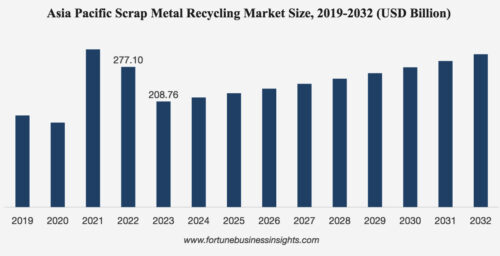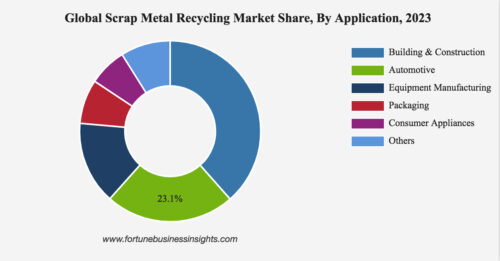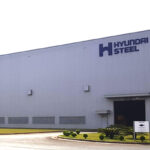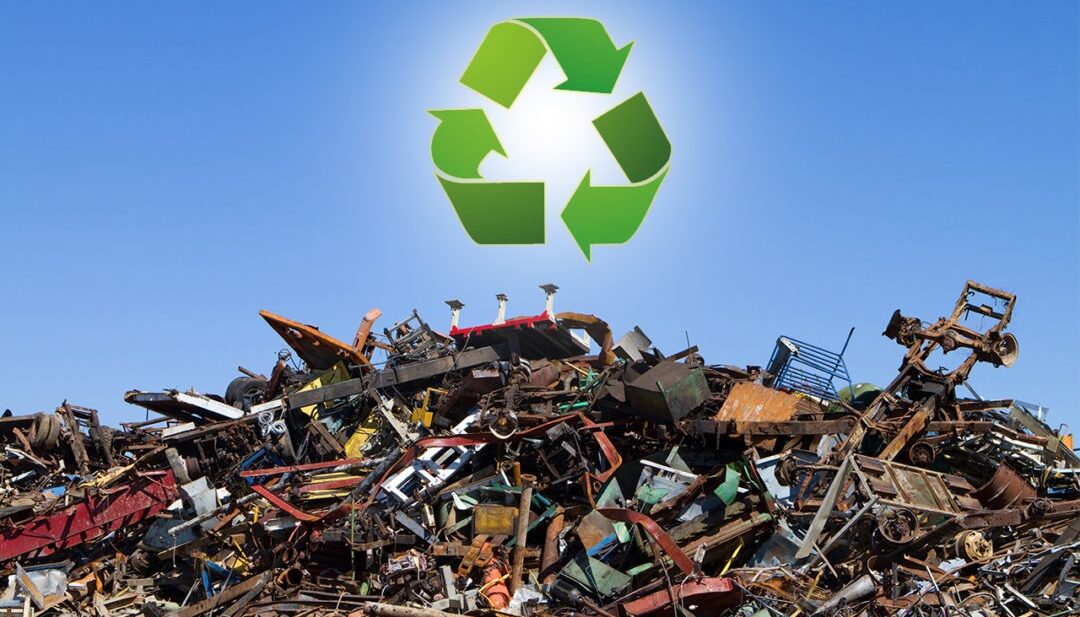KEY MARKET INSIGHTS
The global scrap metal recycling market size was valued at USD 407.02 billion in 2023. The market is projected to grow from USD 420.83 billion in 2024 to USD 568.76 billion by 2032, at a CAGR of 3.8% during the forecast period. Asia Pacific dominated the scrap metal recycling market with a market share of 51.29% in 2023.
Scrap metal recycling is a significant component of global sustainability and resource efficiency efforts. It involves collecting, sorting, processing, and recycling discarded metal materials into useful raw materials for manufacturing new products.
Various factors drive this market, including environmental benefits, energy savings, and economic incentives. The industry’s economic value is enhanced by the fact that metals can be recycled repeatedly without degrading their properties, making them a sustainable resource for manufacturing.
The market experienced several impacts due to the COVID-19 pandemic, affecting supply chains, pricing dynamics, and demand trends for recycled materials. Overall, the scrap metal recycling sector encountered formidable challenges amid the pandemic and demonstrated resilience and adaptability through innovative measures and a heightened focus on sustainability.
SCRAP METAL RECYCLING MARKET TRENDS
Metal recycling is increasingly recognized for its positive impact on the environment. Recycling metals helps reduce the harmful effects of mining and processing new materials. It also aims to conserve natural resources, lower energy usage, and reduce greenhouse gas emissions.
As the world focuses more on sustainable practices, recycling metals for environmental preservation is gaining more attention. This emphasizes its role in creating a healthier planet for future generations.

SCRAP METAL RECYCLING MARKET GROWTH FACTORS
The growing global infrastructure development is driving the demand for recycled metals, leading to a significant shift toward sustainable practices in construction and manufacturing.
Recycling metals is often more cost-effective than extracting and processing new metals. It plays a key role in the recycling and manufacturing industries. As urbanization and economic growth continue, demand for infrastructure and construction materials increases. Recycled metals offer a sustainable solution to meet this demand.
RESTRAINING FACTORS
Volatility in raw material prices, particularly scrap metals, significantly hinders market growth. When prices of scrap metals fluctuate, it creates uncertainty and challenges for industries that rely on these materials for production.
Companies may face increased costs, leading to higher product prices and potentially reducing demand. Planning and forecasting become more difficult for businesses, impacting investment and expansion strategies. This volatility can affect various sectors, including construction, automotive, and electronics, which heavily depend on metal materials.
SCRAP METAL RECYCLING MARKET SEGMENTATION ANALYSIS
By Type Analysis
Based on type, the market is segmented into ferrous and non-ferrous. The ferrous segment held a dominant share of the scrap metal recycling market in 2023.
Ferrous scrap metal, primarily composed of iron and steel, leads significantly in the scrap recycling industry. It holds a dominant share due to its extensive use in various sectors, including automotive, construction, and manufacturing.
Ferrous scrap recycling supports environmental sustainability by reducing the need for virgin ore. It also plays a crucial role in the economy by providing cost-effective raw materials for steel production.
RECYCLING PROCESS
Recycling typically involves collecting, sorting, and shredding the metal before it is melted and repurposed. This process forms a critical loop in the resource conservation cycle.
NON-FERROUS SCRAP METALS
Non-ferrous scrap metal includes metals that do not contain significant quantities of iron and are not magnetic, such as aluminum, copper, lead, zinc, and nickel.
These materials are highly sought after in recycling due to their ability to retain their original properties and quality after recycling.
ENVIRONMENTAL IMPACT
Recycling non-ferrous metals is crucial for reducing the environmental impact of mining new metals. It also helps conserve energy and decrease greenhouse gas emissions.
MARKET DRIVERS
The global market for these metals is extensive, driven by the electronics, construction, automotive, and packaging industries. These sectors rely heavily on sustainable materials for manufacturing various products.

Source: https://www.fortunebusinessinsights.com/scrap-metal-recycling-market-105275



